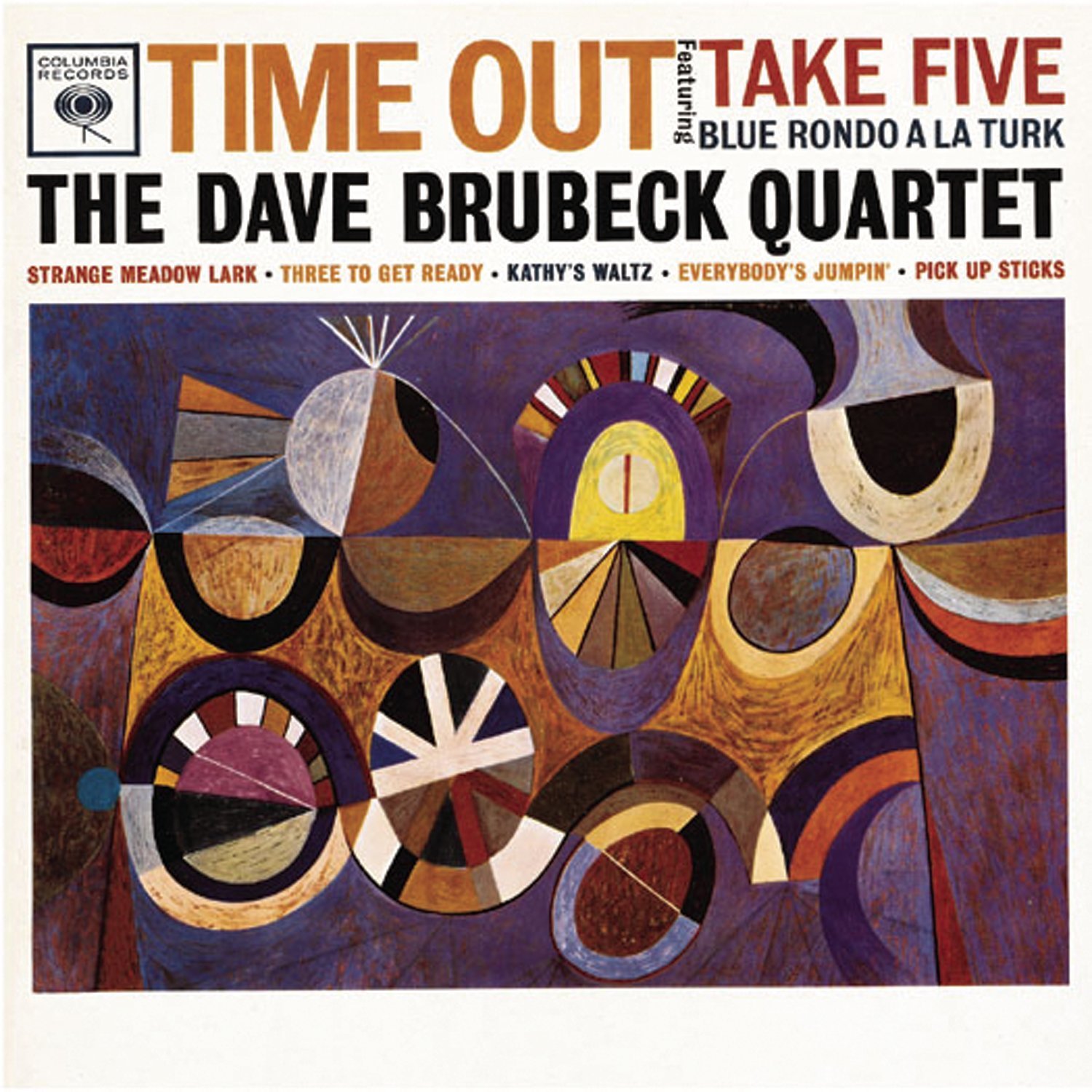
"Kathy's Waltz", named after Brubeck's daughter Cathy but misspelled, starts in 4Ĥ, and only later switches to double-waltz time before merging the two. It was supposed to be a Joe Morello drum solo." "Three to Get Ready" begins in waltz-time, after which it begins to alternate between two measures of 3Ĥ. According to Desmond, "It was never supposed to be a hit.

"Strange Meadow Lark" begins with a piano solo that exhibits no clear time signature, but then settles into a fairly ordinary 4Ĥ swing once the rest of the group joins. 11, and reflects the fact that the band heard the rhythm while traveling in Turkey. The title is a play on Mozart's "Rondo alla Turca" from his Piano Sonata No. " Blue Rondo à la Turk" starts in 9Ĩ, with a typically Balkan 2+2+2+3 subdivision into short and long beats (the rhythm of the Turkish zeybek, equivalent of the Greek zeibekiko) as opposed to the more typical way of subdividing 9Ĩ as 3+3+3, but the saxophone and piano solos are in 4Ĥ. It produced a Top 40 hit single in " Take Five", composed by Paul Desmond, and the one track not written by Dave Brubeck.Īlthough the theme of Time Out is non-common-time signatures, things are not quite so simple. It received negative reviews by critics upon its release. On the condition that Brubeck's group first record a conventional album of traditional songs of the American South, Gone with the Wind, Columbia president Goddard Lieberson took a chance to underwrite and release Time Out. The album was intended as an experiment using musical styles Brubeck discovered abroad while on a United States Department of State sponsored tour of Eurasia, such as when he observed in Turkey a group of street musicians performing a traditional Turkish folk song that was played in 9Ĩ time with subdivisions of 2+2+2+3, a rare meter for Western music. The album was selected, in 2005, for preservation in the United States National Recording Registry by the Library of Congress as being "culturally, historically, or aesthetically significant". The album was inducted in the Grammy Hall of Fame in 2009. By 1963, the record had sold 500,000 units, and in 2011 it was certified double platinum by the RIAA, signifying over two million records sold. The single " Take Five" off the album was also the first jazz single to sell one million copies. 2 on the Billboard pop albums chart, and was the first jazz album to sell a million copies. The album is a subtle blend of cool and West Coast jazz. Recorded at Columbia's 30th Street Studio in New York City, it is based upon the use of time signatures that were unusual for jazz such as 9Ĥ. ( Times are as given on the CD the album numbers differ slightly.Time Out is a studio album by the American jazz group the Dave Brubeck Quartet, released in 1959 on Columbia Records. Throughout Time Inīrubeck’s compositions bring out the best in Desmond, whose light, airy sound was the musical equivalent of a martini so dry it would have passed inspection by Winston Churchill." Track listing 'Softly, William, Softly' is a deeply expressive ballad, and 'Lonesome' is equally moving.

On the ironically-titled opening track, 'Lost Waltz', the group swings with an urgency that reaches its peak during Brubeck’s vigorous solo. With more than two dozen albums behind them by the time this album was recorded, was the foursome a spent force? Definitely not-and, in fact, one listen to Time In will dispel any notions of the quartet as 'polite jazz'. Time In was also one of the final records by a much-loved quartet that included Paul Desmond on alto saxophone.
#The dave brubeck quartet time out series#
The Absolute Sound's Jeff Wilson wrote: "This 1965 release ended the Dave Brubeck Quartet’s series of time-themed albums, the most famous being 1959’s Time Out, which contained the ever-popular ' Take Five'. Though it is seldom celebrated as such, this is one of Brubeck's finest moments on Columbia." of all the 'Time' recordings, this is the least commercial. Stylistically, they cover a considerable range, from slow ballads in a West Coast jazz sound, to some of the religiously themed work he began to essay in the later 1960s ( Forty Days, which would later appear in his The Light in the Wilderness: An Oratorio for Today), to more driving bebop-influenced numbers.ĪllMusic's reviewer Thom Jurek wrote that it was "one of his most musically adventurous. Time In is a 1966 studio album by Dave Brubeck, the last of Brubeck's 'Time' series.Īll the compositions on it were written by Dave Brubeck (two co-written with his wife Iola Brubeck), and performed by the Dave Brubeck Quartet. Anything Goes! The Dave Brubeck Quartet Plays Cole Porter


 0 kommentar(er)
0 kommentar(er)
